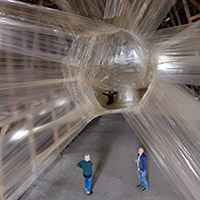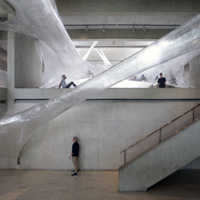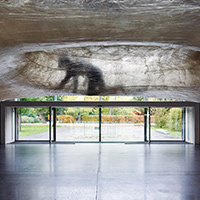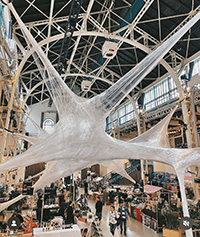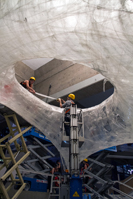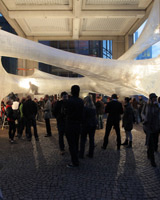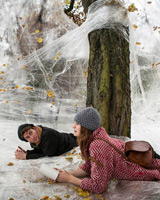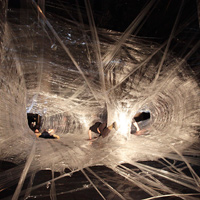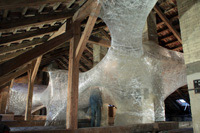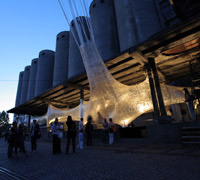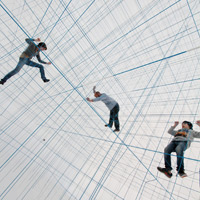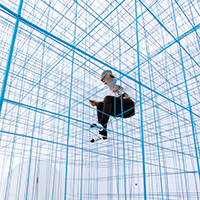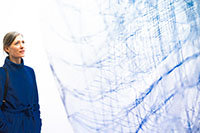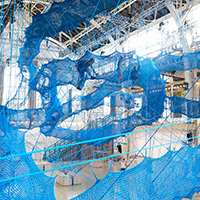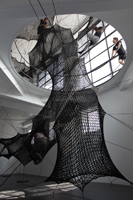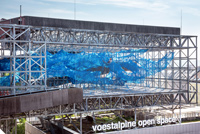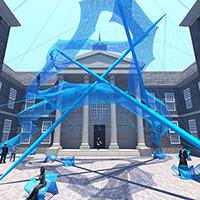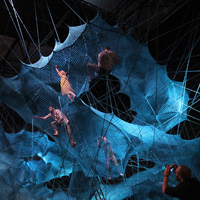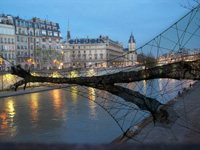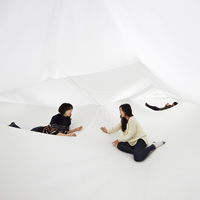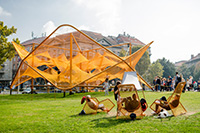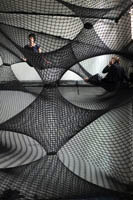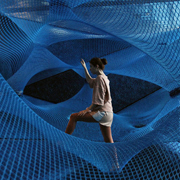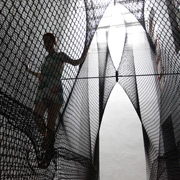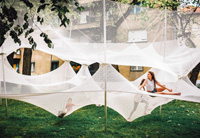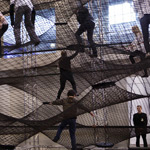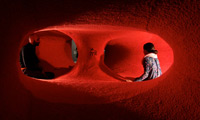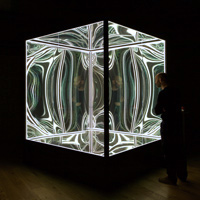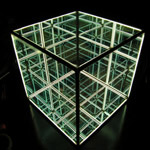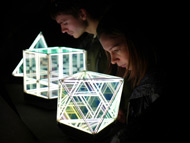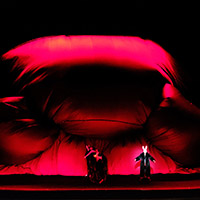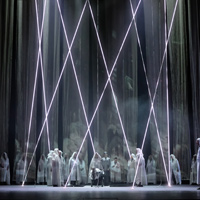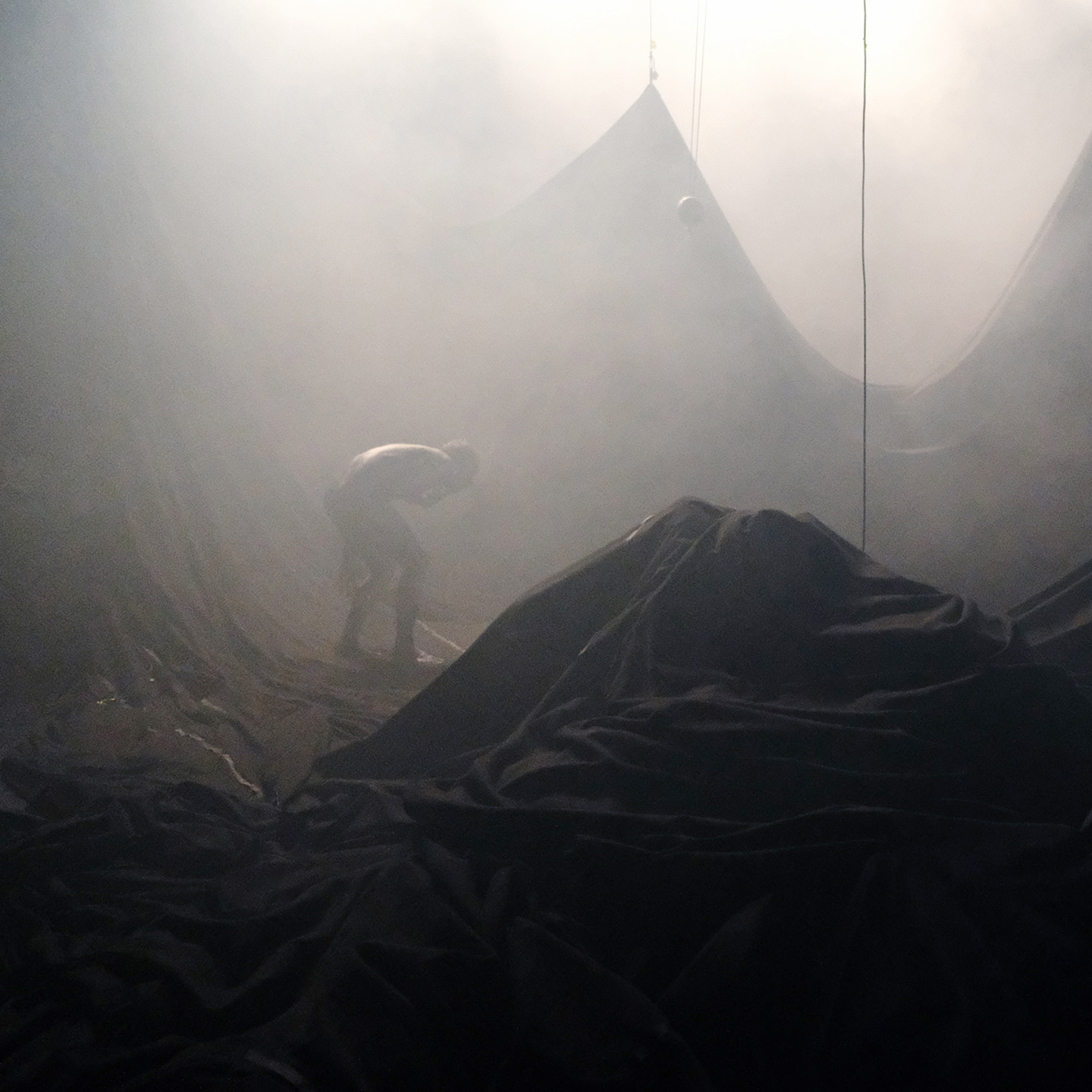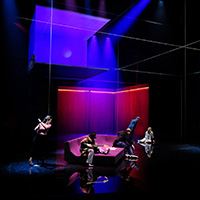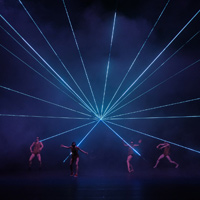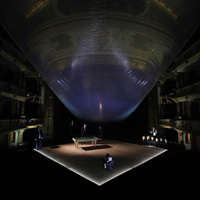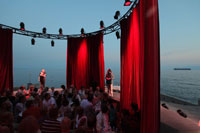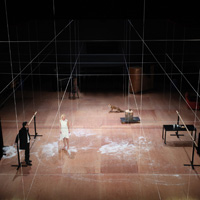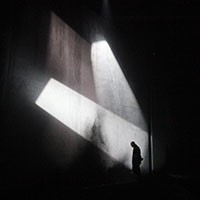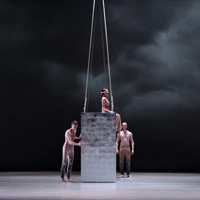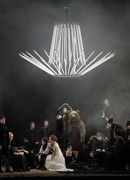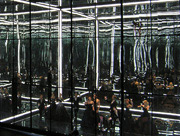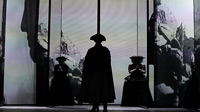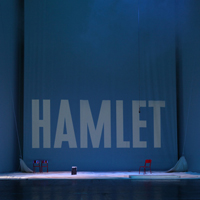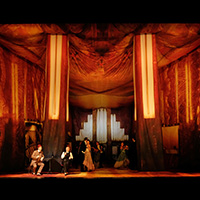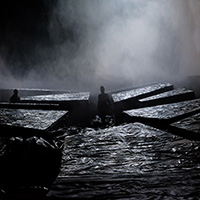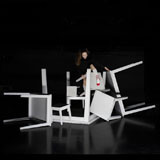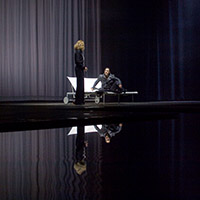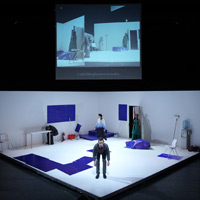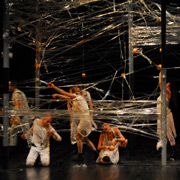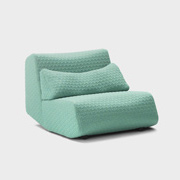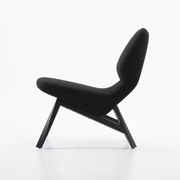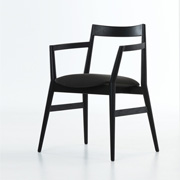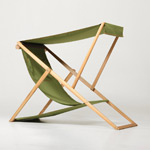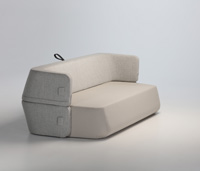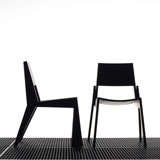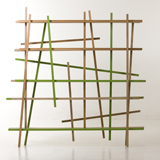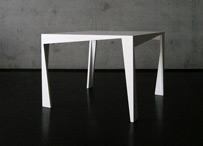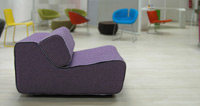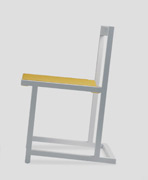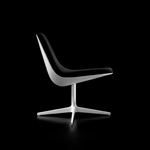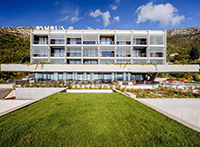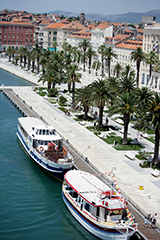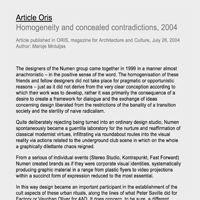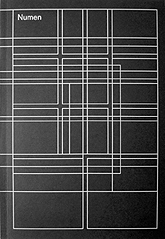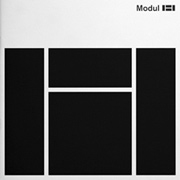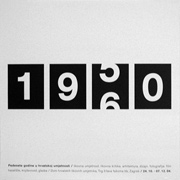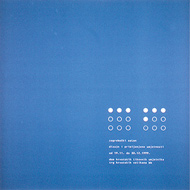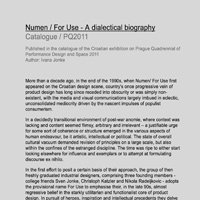Director: Aleksandar Popovski
Production Design: Numen + Ivana Jonke
The film’s historical context is the Macedonian city of Bitola in the time of the collapse of Ottoman Empire and in the wake of the national uprising. The story unfolds around the recollections of a woman who spent her youth waiting on the balcony for the departed revolutionary lover (the legendary Kemal Ataturk, „father of the Turks“) to return from war. Tracing down the opulent flow of the woman’s elaborate dress, we are plunged by the trick of the camera into a strange new world woven out of fabric, a dreamlike landscape of her memory. The idea to build the entire film set around the motive of the curtain, through the systematic and elaborate deployment of various fabrics, imposed itself out of several reasons. One was the necessity for visual reduction and stylisation to the historical setting but also a wish to introduce an aspect of theatrical conceptuality into the standard motion picture design, preferably without inflicting too much violence to the general contours and atmosphere of the period. Another reason was the imperative of a thoroughly functional and economical solution - a structure based on the fairly cheap and re-usable material forming a system that would be easy to construct, transport, transform and disassemble.
Apart from fulfilling these technical demands, the shadowy world of labyrinthine curtains seemed like the perfect conceptual backdrop for illustrating the limiting and overly protective realms of Turkish seraglios as well as for suggesting the flimsy and increasingly unstable socio-political structure of their vassal dominions.
The associative links between the lavishness of textiles and Ottoman decadence are old and extensive. Moreover, the endless layering and plicature of semi-transparent fabric seems to envelop in its delicate folds a deeply oriental implication of the mysterious, secluded and forever unreachable sphere of women.
As a scenographic element, the curtain possesses a dual quality in the sense that it works almost as a real object when used to outline and enclose film’s interior spaces (the seraglio, the bar, the bordello) or as a heavily stylised metaphor, crossing over the slippery edge of the surreal, when expelled into the fictional, fantastic outside (the woods, the field, the city).
The only surface that stays deeply anchored into concrete reality is the floor, together with all the free-standing objects. While the horizontal plane is kept firmly realistic, all the vertical lines seem to project into infinity, limitless, unbound by sky or ceiling.
Different sets are subtly colour coded – the city and the surrounding wilderness are cast in predominantly black, with all the public interiors (the courtroom/ bar) accentuated in theatrical red. The private realm of the seraglio is warm-lit, sensuous white.
The filming locations were constructed consecutively, in two adjacent industrial halls, allowing for the recycling of material acquired by the tearing down of the previous set, in the construction and assemblage of the new one; a praxis which greatly diminished the costs of the production. The entire film was shot using artificial lighting.

